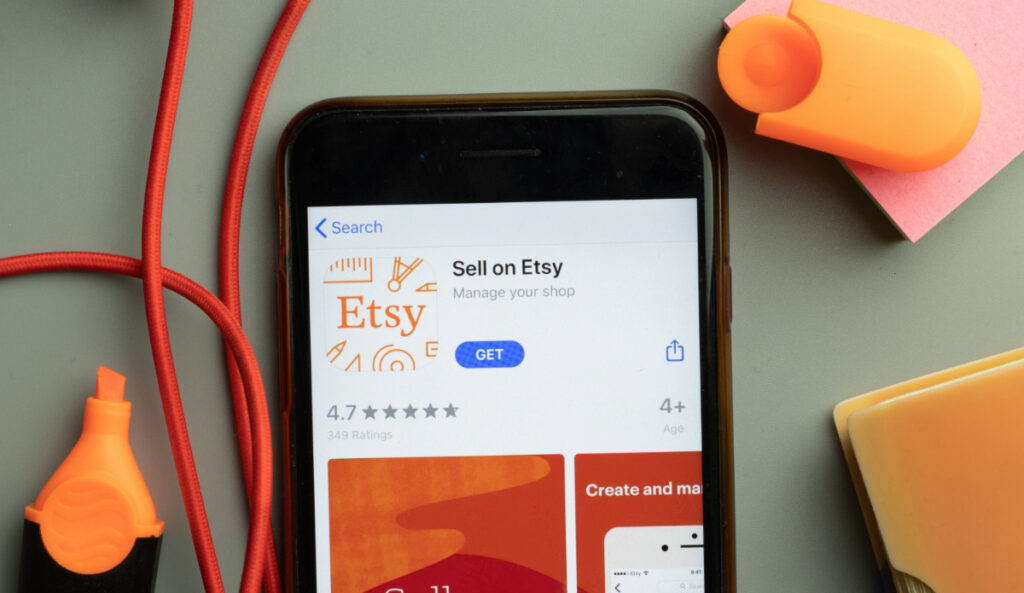How to capitalize on e-commerce: 5 top selling platforms

If you’re looking to unload some unwanted possessions or turn a profit on something you found at a thrift store or yard sale, selling online is a great option. Nowadays, there are several options for listing your items or services online. By choosing the right platform for your needs, you can ensure that you bring in a profit and reach as many potential customers as possible.
Here are some of the top e-commerce platforms, how to use them, and the pros and cons of each.
1. Etsy
Etsy is primarily home to handmade goods, arts and crafts, and vintage items. Opening an Etsy store is relatively simple and just requires selecting a shop language, country, currency and name, as well as billing an payment information — no billing information required.
You can add product listings to your shop by posting a photo, adding details, pricing, and shipping. Etsy’s seller policy outlines exactly what products can be sold on the site.
Etsy requires 20 cents to list your item, then a 5% transaction fee on the sale price.
2. EBay
EBay has a little bit of everything, from home goods and kitchen supplies to electronics and vehicles. To start selling, you’ll need to create an eBay account then register as a seller. The registration process is simple, and can even be linked to your Facebook, Google, or Apple account.
Once you’re registered, you can create a listing by uploading a photo, writing a description and title, setting a price, picking a purchase format, then setting up shipping. eBay takes 10% of the final sale price of each sold item. If you’re a frequent seller and sell more than 50 items per month, eBay will charge 30 cents for each shipping over the 50th.
3. Facebook Marketplace
As long as you have a Facebook account, you can post items on Facebook Marketplace. Within Facebook’s menu, click the “Marketplace” page. Once in the Marketplace, pull up the menu and select “create new listing.” From there you’ll simply choose the listing type — whether an item, vehicle, room for rent, or job opening — then add a title, description, category, and relevant tags.
Facebook will calculate the shipping cost for you, then tell you how much you can expect to make once it’s sold. Facebook will automatically deduct 5% as part of their selling fee.
Tips for selling on Facebook Marketplace
4. Amazon
Third-party sellers account for 58% of Amazon’s sales. If you plan to sell fewer than 40 items per month, then you should register for an individual account. If you sell more than that, then a professional account will be a better fit for your needs. You can change plans at any time, but the fee for an individual account is 99 cents per sale, while the professional fee is $39.99 per month.
In order to register, you’ll need to supply your bank account number and bank routing number, chargeable credit card, government-issued national ID, tax information, and phone number. When you’re ready to list an item, you’ll need to include the SKU, product title, product description and bullet points, product images, and search terms and relevant keywords.
Additional selling fees may also apply depending on the items you’re selling.
Poshmark
Poshmark is a selling platform specifically for clothing. It’s easiest to list items on Poshmark using the app, where you can quickly register for an account, upload pictures of items, and list them for sale. Since Poshmark is a clothing app, you should carefully describe the condition of each item, take plenty of pictures, and detail the fit and style.
Poshmark has a prepaid shipping cost, making it easy to ship items and know exactly what the cost will be. For all sales under $15, there’s a $2.95 selling fee, while sales more than that require a 20% selling fee.
Tips for selling on Poshmark
More Resources

From blog writing to photo editing: how to pursue your hobbies on the internet
